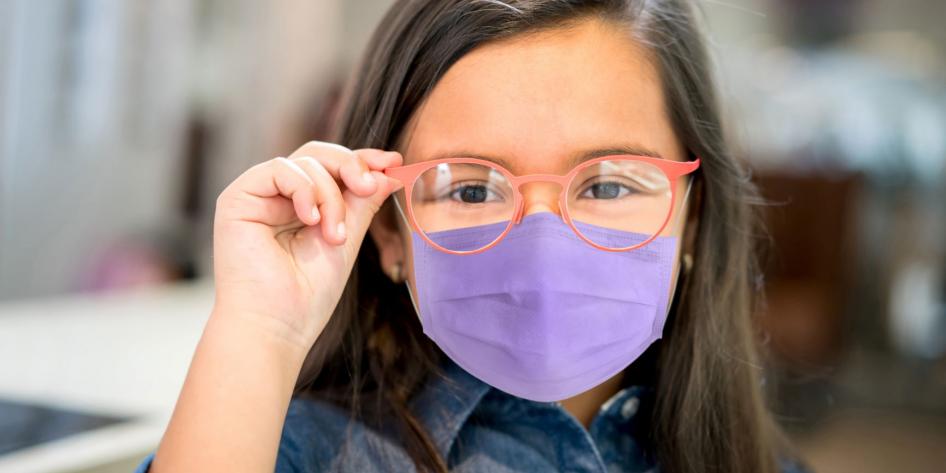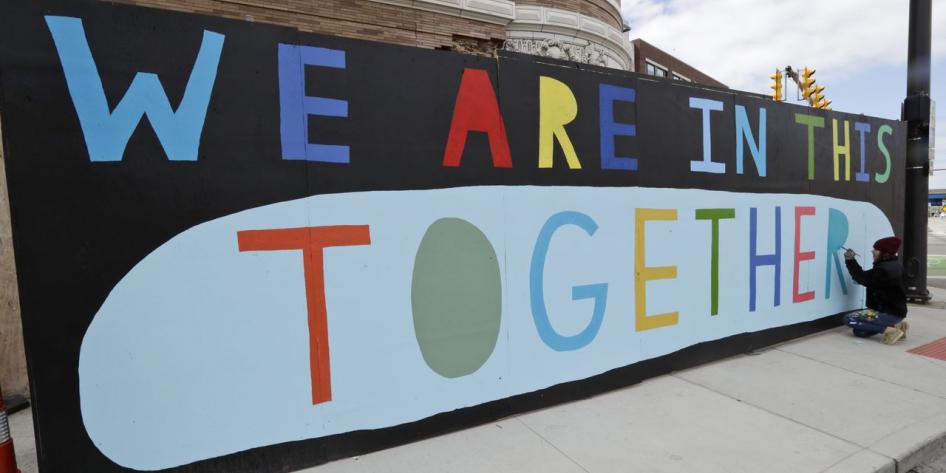PQHS Faculty, Staff, and Students Lead and Contribute
PQHS faculty, staff, and students have played an integral role in the regional response to the COVID-19 epidemic and in local, national, and international research.
Our team members:
- Support the city of Cleveland in contact tracing and making decisions about the allocation of resources
- Develop unique studies to inform best practices in keeping child care centers safely open
- Work with regional and national media to help the general public understand COVID-19 and how best to respond
See what we have been doing and come back often as we update the contributions from the many PQHS team members who are playing active roles in the COVID-19 pandemic response.
Daniel Tisch, PhD, MPH, and Scott Frank, MD, MS – along with staff and students – have been working with the City of Cleveland since the earliest days of the pandemic response. They continue to support the city’s public health department with contact tracing and other response issues. Through a renewed collaboration, Dr. Tisch, Director of the CWRU/MPH program, leads an epidemiology team to advise and collaborate with management, analysis, and display of data essential to strategic decision making.
Dr. Frank – who created the MPH program 20+ years ago – leads another team using population health data to advise the public health department in the deployment of resources and other community concerns.
“The City of Cleveland values its partnership with Case Western Reserve University,” said Mayor Frank G. Jackson. “Epidemiology is vital to CDPH’s operations and service to Clevelanders.”
Read more about this collaboration here.
Dr. Tisch recently presented to department faculty and students about the team's work with the city of Cleveland over the last year. View the video of his presentation below.
Daniel Tisch, PhD, MPH
Associate Professor, PQHS
Director, Master of Public Health Program
Member, Center for Global Health and Diseases, CWRU School of Medicine
Scott Frank, MD, MS
Associate Professor, Department of Population and Quantitative Health Sciences, School of Medicine
Associate Professor, Department of Family Medicine and Community Health, School of Medicine
Director, Master of Public Health Program, School of Medicine
Darcy Freedman, PhD, MPH, and her team conducted a rapid-response study that included (A) statewide examination of COVID-19 cases among child care staff and children attending child care and (B) in-depth analysis in 10 counties including data collection using a mixed-methods approach.
The study took place from Aug. 15 to Nov. 20, 2020, during a timeframe of relatively low community transmission of COVID-19. More data collected during a timeframe of higher community transmission will be published shortly. The team found COVID-19 infection rates at child care programs in Ohio have been low as a result of:
• clear and comprehensive state guidelines for mitigating transmission within child care settings;
• streamlined reporting of cases to monitor trends;
• resources to support adherence to state guidelines; and
• high compliance with these guidelines by child care workers and families.
This study was funded by the Ohio Bureau of Workers’ Compensation (BWC) and supported by the Ohio Department of Job and Family Services (ODJFS). The study relied on a sample of child care facilities that mirrors a mix of urban, suburban and rural settings found across the country, offering insight into child care experiences nationally.
A data brief is available for download.
Darcy Freedman, PhD, MPH
Director, Mary Ann Swetland Center for Environmental Health
Mary Ann Swetland Professor, PQHS
Core Faculty, Prevention Research Center for Healthy Neighborhoods
Member, Case Comprehensive Cancer Center
Mark Cameron, PhD, has become a trusted go-to source for regional and national media looking for informed updates about the pandemic in general, about trends in incidence, and what various changes in the COVID-19 landscape mean for individuals as they navigate safety precautions including masking and social distancing. Recent highlights include:
- CNBC online: Six Vaccinated Medical Experts Reveal Their Summer Travel Plans
- The Boston Globe: The New Travel Reality: Vaccine Required
- Mashable.com: Assume the new coronavirus variant is in your community
Mark Cameron, PhD
Associate Professor, PQHS
Faculty, Cleveland Institute for Computational Biology
From Cleveland.com:
Problems have surfaced over and over, as the coronavirus wormed itself into every facet of society this last year, revealing broken structures and unprepared organizations, inefficiencies and disparities.
Longstanding healthcare inequities stem from access, affordability and even the stress of systemic racism. People in neighborhoods with larger minority populations are more likely to suffer from lead poisoning, infant mortality and heart disease, said Dr. Erika Trapl, an epidemiologist and associate professor at Case Western Reserve University’s Department of Population and Quantitative Health Sciences.
Erika Trapl, PhD, said increasing health equity includes decreasing poverty. That means creating educational and economic opportunities in neighborhoods that have had underinvestment or disinvestment.
Read the full Cleveland.com story here.
Associate Professor, PQHS
Faculty members' research and PhD trainees' dissertations have been informed by the pandemic. Below is a sampling of work done across the department.
Rachel Pope, Licia Clowtis, Curtis Tatsuoka, Heidi Gullett, Jing Zhang and Lynn Singer
As part of a NIDA funded planning grant for a large longitudinal study of infant development, we received supplemental funding to assess stressors related to Covid-19 and mental health and coping behaviors in a cohort of women diagnosed with Covid-19 during pregnancy, a collaboration with the Cuyahoga County Board of Health surveillance study of medical outcomes in these women.
The proposed study will assess substance use and psychological factors in pregnant women diagnosed with COVID-19 and compare them to COVID-19 free pregnant women of similar race and socioeconomic status .As COVID-19 is anticipated to remain active over the next two years, and new infectious diseases will continue to emerge over the next decade, knowledge obtained will enhance current planning efforts to recruit and retain pregnant women in the planned longitudinal study.
All women will be interviewed regarding their use of substances, and administered standardized normative measures of psychological distress and coping,utilizing the NIH toolbox. Collected data will accomplish three primary aims: 1) Characterize the type, amount, and frequency of substances, prescribed and non-prescribed, used by pregnant women with and without diagnosis of COVID-19 in Northeast Ohio during the current pandemic. 2) Characterize the mental health symptoms, coping mechanisms, and social supports of pregnant women with/without a diagnosis of COVID-19 during the current pandemic. 3) Identify whether pregnant women with positive COVID-19 diagnosis differ from pregnant women without active disease in history of, and current substance use, substance use disorders, mental health symptoms, coping mechanisms, and social supports.
Gwendolyn Donley
Committee: Darcy Freedman, William Bush, Andrew Curtis, Lee Hoffer
Pregnant women with COVID-19 have high likelihood of preterm birth and serious complications from the virus. In the United States, Black mothers already experience disproportionate adverse birth outcomes compared to White mothers. This combination puts Black pregnant women in a unique risk category in the context of COVID-19. Within this context, perceptions of disease susceptibility are poorly understood and there remains a dearth of qualitative information around Black pregnant women’s lived experiences in this changing crisis landscape. Our research used in-depth qualitative interviews, repeated three times per participant over six months, with community health workers and Black pregnant women to better understand healthcare access, navigation, and trust, including vaccine equity; financial stability and trade-offs caused by COVID-19; perceived susceptibility; and how these changed over time. Preliminary results indicate high vaccine hesitancy, largely driven by knowledge of historic abuses of the Black population by the medical community (e.g., Henrietta Lacks, the Tuskegee syphilis study). These perceptions have varied little since December 2020 and were consistent across community health workers and pregnant women. Financial stress often overrides health concerns related to COVID, although the sample included significant heterogeneity in employment and financial obligations. Government interventions like the periodic stimulus checks released in 2020-21 function as tipping points allowing people to move to improved housing, obtain transportation, or purchase necessary items for their children. Interviews conducted after the third stimulus check was released (March-April 2021) indicated improved financial stability among participants. Analysis is ongoing and results will become more detailed in future dissemination.
Andrew Curtis, Jacqueline Curtis, Jayakrishnan Ajayakumar
Identifying emergent patterns of coronavirus disease 2019 (COVID-19) at the local level presents a geographic challenge. The need is to identify meaningful spatial patterns, especially in vulnerable settings where even small numbers and low rates are vital for the targeting of early intervention. This presentation identifies a gap in current spatial analytical approaches that tend to rely on maps describing broader patterns of disease rather than a near-real time assessment of emerging situations. This new technique, Geographic Monitoring for Early Disease Detection (GeoMEDD), is either used as a stand-alone analysis or part of an “enterprise” solution integrating a spatial database, by providing multiple spatial and temporal perspectives on an ever-changing disease landscape by connecting cases using different spatial and temporal thresholds. GeoMEDD, has proven effective in revealing different cluster sizes, as well as the influencers and accelerators that give insight as to why a cluster exists where it does, and why it evolves. In this presentation we will show how the technique was developed at the beginning of the pandemic to support a single hospital system, but soon evolved into the syndromic surveillance tool for the entire US state of Ohio. We will go on to show how it can be used to sort through spatial noise in periods of surge, or for identifying flare-ups when cases recede. In this regards it has also proven useful for the spatial targeting of vaccine deployment.
Future Work:
The technique has been developed for maximum flexibility for different data environments, making it ideal for any global setting including locations with limited resources. GeoMEDD can also be used to address other health situations beyond the current pandemic, for example clustering opioid overdoses or even finding patterns in spatial text based mixed method projects. The three-dimensional nature of the clustering also opens opportunities to investigate various spatial structural aspects of endemic / epidemic relationships and specific diffusion pathways.
Publication:
Curtis A., Ajayakumar J., Curtis J., Mihalik S., Purohit M., Scott J., Muisyo J., Labadorf J., Vijitakula S., Yax J., Goldberg D., (2020) Geographic monitoring for early disease detection (GeoMEDD) Nature Scientific Reports 10 (1) 1-11
Mark Cameron
Drs. Mark and Cheryl Cameron’s group has spent much of the past year applying immunobiology research they began in 2003 during the original SARS-CoV outbreak in Toronto, Canada to compare and contrast reasons why the immune system fails in some patients with SARS-CoV-2 infection leading to severe COVID-19 disease or fatal outcomes. They are continuing their systems biology analysis now in post-COVID-19 convalescents and COVID vaccines and exploring the relationships between specific immune activation profiles, COVID-19 "long haul” syndrome, and/or COVID vaccine non-responders. When complete, this biomarker data may help predict the eventual outcomes of COVID-19 disease and/or vaccination, monitor and advise the clinical care of the patient, and identify druggable targets therein.




